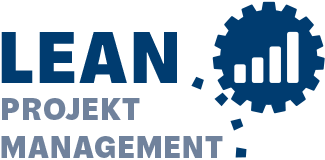Data Lean Logistics - Concept of data-driven construction logistics as a basis for the successful implementation of lean construction methods
Funding organisation: Federal Institute for Research on Building, Urban Affairs and Spatial Development (BBSR)
Project duration: 10/2024 - 09/2026
Data Lean Logistics researches how synergy effects between construction logistics and construction execution can be generated through the use of lean construction, BIM and IoT. The focus is on the development of a DATA LEAN LOGISTICS Controlling Instrument (DLL-CI) for the precise and data-supported control of execution and logistics processes on the construction site.
The construction industry has experienced a low increase in productivity in recent decades compared to other industries, but concepts of process optimisation (e.g. lean construction) and their methods (e.g. cycle planning and control or last planner system) as well as digital transformation and its methods such as Building Information Modelling (BIM) have proven that they can lead to an increase in productivity in the planning and control of execution processes. However, the full potential of these concepts and methods for construction execution can only be realised if these and other processes, such as construction logistics processes, are considered holistically. Although construction logistics can play a significant role in increasing productivity, its potential has not yet been sufficiently utilised.
The aim of this research project is to exploit optimisation potential through synergy effects between construction logistics and execution processes using lean construction methods, the BIM method and other concepts of digital transformation such as the Internet of Things (IoT). The aim is to investigate how a schedule created according to lean and BIM methods can serve as an impulse generator for data-driven construction logistics and how the data generated in the supply chain can be merged in a DATA LEAN LOGISTICS Controlling Instrument (DLL-CI) in order to be used, for example, for target/actual comparisons to control the schedule.
In order to achieve this goal, the first step is to analyse which information is relevant for the optimal planning of construction logistics resource flows such as materials, equipment, personnel and BE facilities and which information can be used in the supply chain in the DLL-CI. A concept created to generate the required data is checked in a test phase using a digital construction logistics model. The final validation takes place on a construction site.
Project partners






